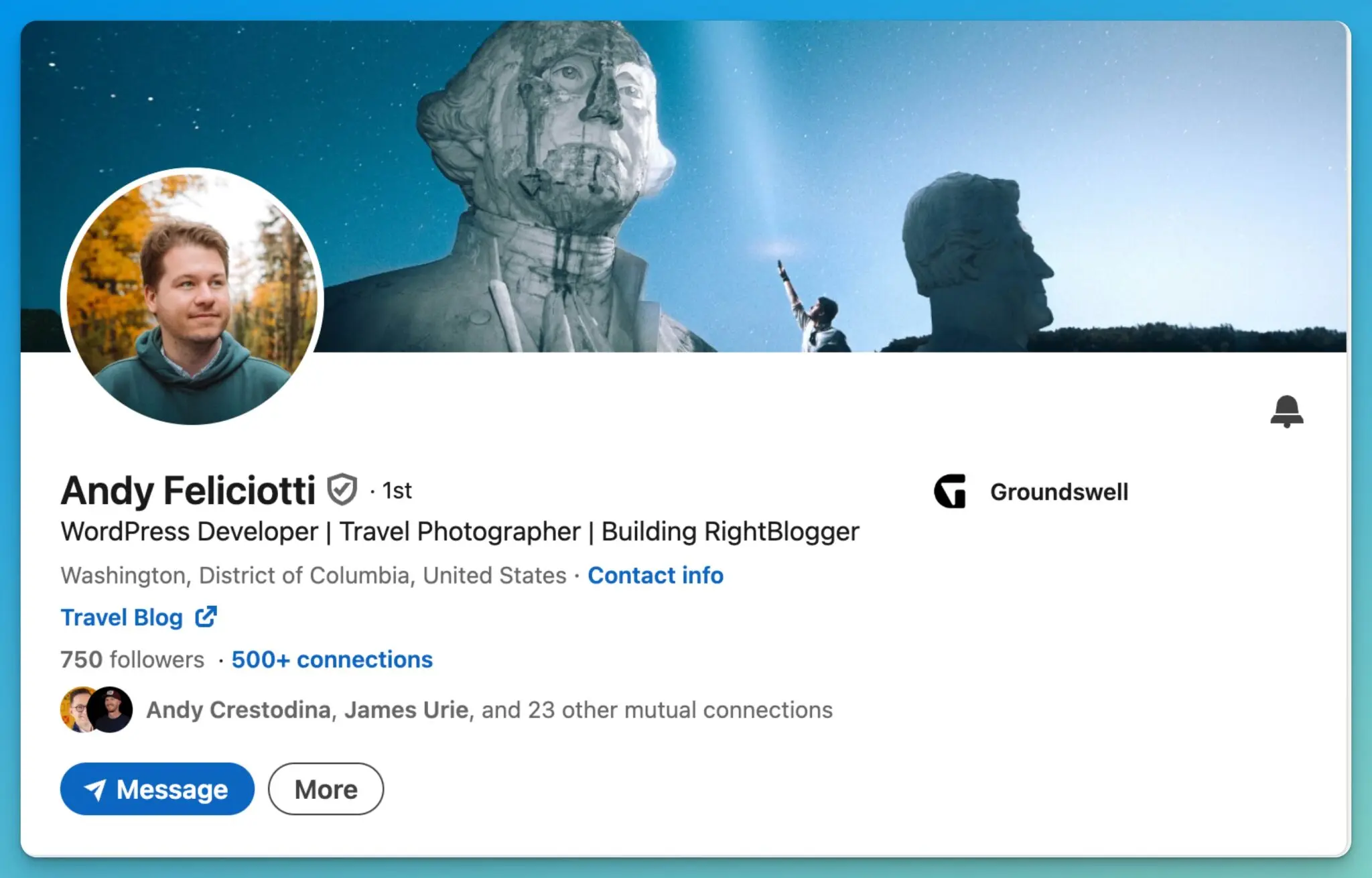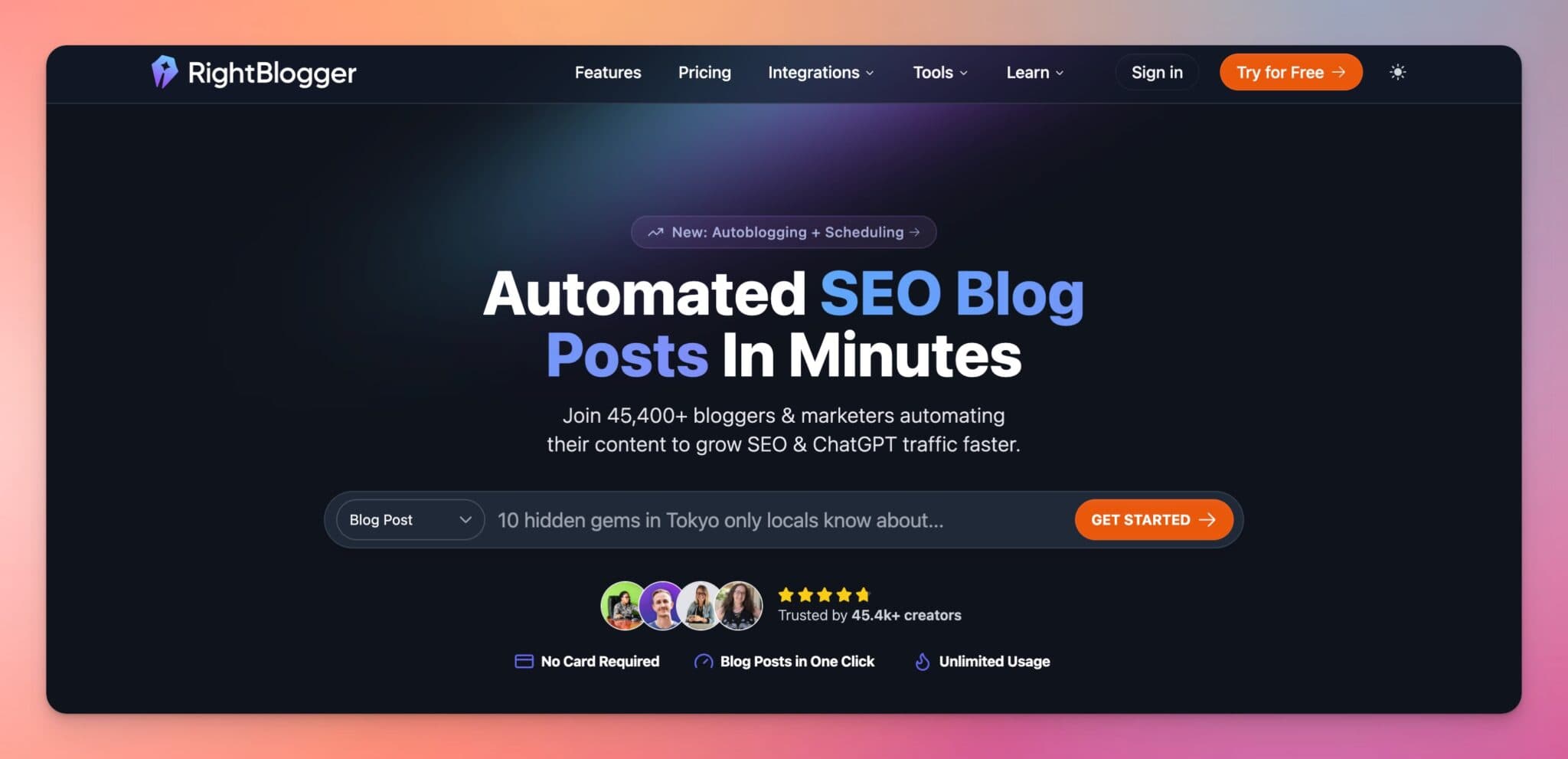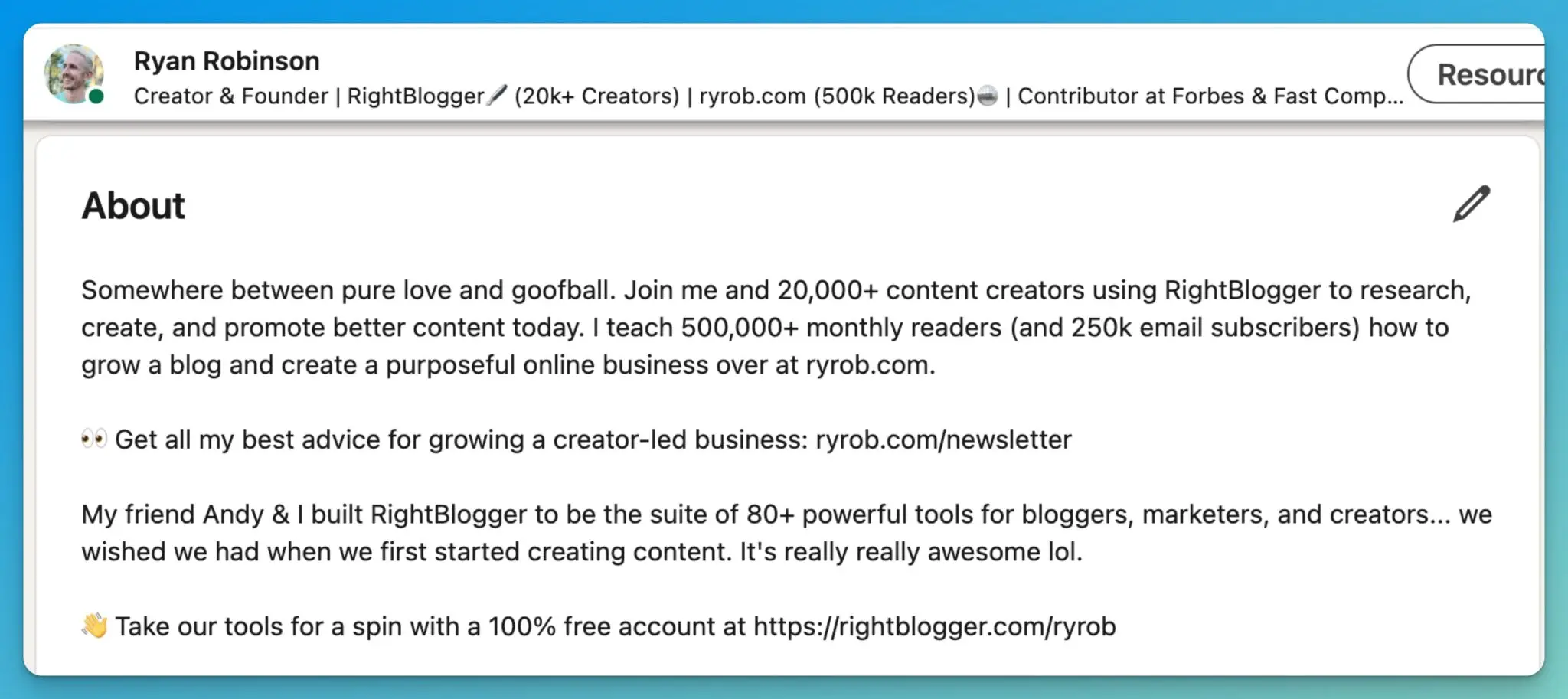10 Personal Bio Examples: Tips, Tools, and Inspiration

Looking for some genuinely great personal bio examples to inspire a fresh rewrite of your bio? We’ve got your back.
In this post:
- A personal bio shares your top skills, work achievements, and key facts in a quick, clear way.
- Personal bios suit many platforms like LinkedIn, social media, websites, and author sections.
- Short, direct bios help others learn about you at a glance.
- Strong bios focus on your major strengths and goals, and give a way to connect.
- Real examples help guide you in writing your own bio.
Whether you’re writing a personal bio for LinkedIn, telling your story on your own website, crafting a quick bio as part of a guest post, or even writing something snappy for socials like X (Twitter) or Instagram—I know how tough it can be to feel confident in hitting the right note with your bio.

You wanna make your expertise clear… without sounding like you’re bragging. You wanna come off as professional(ish)… but also relatable and not stuffy. I get it, you’re walking a bit of a personal bio tightrope, so to speak.
In this roundup, we’re running through some practical tips, useful tools, and great personal bio examples that’ll help you write a bio you’re proud of.
📄 Want to quickly create a standout personal bio? Use RightBlogger’s Social Bio Generator. You can use it to craft a first draft of a bio tailored to Instagram, X, TikTok, Facebook, LinkedIn, and/or Pinterest.
Create Automated SEO Blog Posts in Minutes with RightBlogger

Join 45,417+ bloggers, creators, marketers, writers, & business owners in using RightBlogger’s powerful autoblogging tools. You’ll unlock 80+ blogging, SEO, and marketing AI tools to create content faster & more effectively today. Plus, you’ll access our library of courses, a private community, Tool Studio’s AI lead magnet builder, and more.
What is a Personal Bio?
A personal bio is a short narrative-style description that provides a concise overview of your skills, professional achievements, and characteristics that make you… well, you.

Your bio could be written in the first person (“I am…”) or third person (“Ryan is…”) and ideally presents key facts about you in a way that’s engaging and informative. Because they’re typically just a few sentences long, personal bios focus on the essentials, making them easy to read and digest.
What’s the Purpose of a Personal Bio?
The main purpose of a personal bio is to introduce yourself in a professional or social context, highlighting your most notable accomplishments, skills, and personal qualities. Your personal bio is designed to pitch & position you to people who may want to work with or otherwise engage with you.
Personal bios are most often used on professional networking sites, personal websites, conference programs, and publications where you need to present yourself succinctly. They can help build credibility and provide audiences with a quick snapshot of who you are and what you bring to the table.
10 Outstanding Personal Bio Examples to Learn From
Now that you know what to include in a personal bio, let’s explore some examples to inspire you.
In this section, we’ll share personal bios from various professionals and analyze what makes each one effective.
1. LinkedIn Personal Bio: Gaetano Nino DiNardi

Gaetano Nino DiNardi is a one-of-a-kind growth marketing advisor and content marketing pro with all things marketing & SEO. In crafting his personal bio, Gaetano brings in his story (how he’d dreamed of “becoming a platinum superstar music producer”) and explains how this led him into the world of digital marketing.
Blending a professional summary with a personal narrative can help you create a bio that is both informative and engaging. If you’re aiming to write a bio that captures your professional essence while also reflecting your life journey, try this type of bio as a model.
Gaetano also gives plenty of links to learn more about his work: a good idea if your audience may be split across multiple platforms.
2. LinkedIn Personal Bio: Victor Ijidola

Victor Ijidola’s LinkedIn bio is a great example of how to use social proof and build trust to grab attention. Moving from a content marketer to co-founder of Leaps, he cleverly uses his bio to highlight why his product is valuable and needed.
This technique is a great model for founders or sellers who want to show their skills and the unique benefits of what they offer. If you’re a founder trying to connect with others and prove your product’s worth, try using Victor’s bio as a template to follow.
3. X Personal Bio: Aditya Agarwal

Aditya Agarwal shows how to make the most of your bio on X (formerly Twitter) where you have to make an impact quickly with limited space.
He makes the most of his bio by listing well-known brands he’s worked for, his current job, and a glimpse of his personality at the end (“Optimist, Builder, Dad”). This to-the-point approach gives X users a clear sense of who he is and what he does. If X is your favored social media platform, Aditya’s approach can help you craft a strong and efficient bio in a very short space.
4. X Personal Bio: Joanna Penn

Joanna (J.F.) Penn’s X bio makes it clear what she writes, and also mentions her podcast. The inclusion of her Myers-Briggs personality type is a clever way to quickly give a sense of who she is and to connect with an audience who are into Myers-Briggs … particularly fellow INFJs (one of the personality types that most typically enjoys reading).
Adding “cat lover” at the end is another nice personal touch, and a great way to connect with readers who may also have pet cats.
5. Website Personal Bio: Khris Steven

Khris Steven (Ngoka Christopher) is a blogger and affiliate marketer who’s crafted his bio knowing that i’tll be read by plenty of aspiring bloggers seeking inspiration. He writes in a personal way, talking directly to “you” the reader, and sharing his personal history.
Throughout the rest of his About page, he goes through all the learning he did on his journey, helping establish his self-taught credentials, and sharing exactly what he’s accomplished.
You can write a similarly frank and open bio on your website, if that suits your personal brand and your audience. Being open about your struggles and what it’s taken to get where you are can help inspire readers who want to do the same.
6. Website Personal Bio: Seth Godin

Seth Godin stands out as an author, marketer, and entrepreneur with a wealth of experience. His bio offers a clear snapshot of his career, outlining his business ventures, plus his bestselling books, and highlighting his most significant achievements in marketing.
This type of third-person bio is great for seasoned professionals, especially if you work with a fairly traditional, business-like audience.
7. Website Personal Bio: Ryan Robinson

Here’s my own bio, from my website RyRob. I’m a veteran blogger, podcaster, and accomplished content marketing consultant, but I think my personality comes across here too!
You don’t need to be bland or boring in your bio. You can share whatever’s on your heart … while also making the most of your professional accomplishments. If you’ve worked with major brands in your industry, go ahead and name-drop those in your bio. It’s a quick way to let readers know that you’re credible and have authority.
8. LinkedIn Personal Bio: Julia Borgini

Julia Borgini keeps it short and sweet in this professional LinkedIn bio. She’s crystal clear about what she does (writing B2B copy and content for tech companies) and adds in a touch of humor as well as a compelling reason to hire her.
Like Ryan, she lists her key clients, and also has a clear call to action to encourage prospects to reach out.
9. LinkedIn Personal Bio: Nathan Thompson

Nathan Thompson‘s bio is jam-packed with personality and humor, while remaining professional and clearly describing his current role as well as his work history. It reads like a story rather than a bland fact-filled bio, engaging readers and giving a real sense of who Nathan in.
You could use a similar structure for your own bio, starting with “currently” like Nathan does, then sharing your past experience.
10. LinkedIn Personal Bio: Maya Raichoora

Maya Raichoora keeps it clear and punchy here. She states her big goal up front, and then segues into how she can help prospects, with 4 different services aimed at different segments of her audience.
By including her personal story, she makes it clear she’s coming from a place of powerful lived experience … a great way to connect with readers who may have been through something similar.
What’s the Difference Between a Personal Bio and a Resume?
Personal bios and resumes both provide professional overviews, but they serve different purposes and are structured differently. Here’s a brief overview of each one:
- Personal Bio: A personal bio is a brief overview, usually no more than a few paragraphs, that gives key highlights of your career, personal milestones, and perhaps a hint of your character. It’s more adaptable in content and tone and often takes a storytelling approach.
- Resume: A resume is a detailed document listing your job history, skills, education, and professional achievements. It’s mainly used for job applications and is meant to be thorough and factual. Resumes are structured and formatted to help employers quickly find specific skills and experiences.
What’s the Difference Between a Personal Bio vs Professional Bio?
The terms “personal bio” and “professional bio” can often be used interchangeably. In some contexts, they can have slightly different connotations:
- Personal Bio: A personal biography isn’t just about work accomplishments; it also shares more about who you are. It’s more relaxed and tells your story in a way that’s genuine and engaging. This style works well for your personal website, casual social media profiles, or when connecting with community groups.
- Professional Bio: When it comes to a professional biography, the focus shifts to your career. This type keeps things business-like, spotlighting your skills, job history, and achievements. It’s more formal and is perfect for business websites, professional profiles, and industry networking situations where your expertise and experience are what matters most.
9 Key Things to Include in a Personal Bio
Here are some key elements you might want to include in your personal bio. How much you pack in will obviously depend how much space you have! If you’re writing a 50-word or 100-word bio, you won’t have space for everything on this list.
- Name and profession: It’s often a good idea to begin with your full name, followed by your current professional role.
- Relevant work history: Highlight your past positions and responsibilities that are most relevant to the context in which the bio will be used.
- Key achievements: Focus on accomplishments that showcase your skills and contributions to your field, such as awards, recognitions, or major projects.
- Degrees and certifications: If relevant, mention your educational background. That could include degrees, certifications, and other formal training relevant to your profession.
- Specializations: Mention areas of expertise and special skills that set you apart from others in your industry.
- Personal interests or hobbies: Sharing a bit about your interests outside of work can humanize your bio and make you more approachable.
- Personal traits: Briefly describe characteristics that convey your work ethic or approach to professional challenges.
- Ongoing work: Mention any current projects, roles, or professional engagements that demonstrate your active involvement in your field.
- Contact details: Depending on the context of the bio, you might want to add your contact info.
How to Write a Personal Bio (Overview)
Writing an effective personal bio means including all the key details someone will need to know about you—as well as conveying a clear sense of your voice, style, and personality. It’s as much an art, as it is a science.

Synthesized from our deeper guide to writing a personal bio, here’s a quick overview to help you craft a compelling personal bio for yourself today:
1. Figure Out Your Purpose and Audience
To get clear about the aim of your bio, start by considering where it will be used. Are you writing it for a professional blog, a social media profile, a company website, or maybe for a speaking gig?
Also, think about who’s going to read your bio. This influences the tone, content, and focus. For instance, if your bio is for a business audience, it’ll probably highlight your career achievements. But if it’s for a local volunteer event, it might emphasize your personal traits and character.
2. Choose the Right Perspective and Voice
You’ll need to choose whether to write about yourself in the first person (“I am a software developer…”) or the third person (“John Doe is a software developer…”).
Professional bios typically use the third person for a formal tone, but the first person is more appropriate in some contexts. The choice often depends on your industry and where the bio will appear.
For instance, on LinkedIn, bios are generally in the first person. For corporate events, they’re more likely to be third person.
You also want your tone to match the context as well as feeling like “you”.
Tip: The Social Bio Generator lets you choose your “Tone & writing style.” Experiment with this to get a bio that’s a good fit for your personality.

3. Start with a Strong Opening
Start with a compelling introduction to capture your reader’s interest. Mention your name and your current job or role right away—it’s a quick way to establish who you are and what you’re about.
An intriguing fact or impressive achievement can also draw the reader in, making them curious to learn more.
4. Detail Your Professional Background
List your most important roles and achievements (if you have space). Use active verbs to describe what you have accomplished in these roles … and keep it concise.
If you’re in a field where academic qualifications are important, include those, along with any relevant certifications.
5. Add a Call to Action
Finally, include a way for readers to reach out to you, like your work email, LinkedIn profile, or another professional contact method.
Where Do You Display a Personal Bio?
It’s best to write your personal bio with the context or platform already in mind. Some great places to display your personal bio are:
- Personal Websites: If you have a personal or professional website of your own, include your bio on the homepage or in an “About” section to introduce yourself to visitors.
- Social Media Profiles: Use your bio in the summary section to provide a comprehensive overview of your professional background and achievements on LinkedIn, Twitter, Facebook, Instagram, Quora, and TikTok.
- Author Bio Sections: Include your bio at the end of guest blog posts to provide readers with information about you. (Include a CTA to encourage them to click through to your own website.)
- Resumes and CVs: Include a brief bio at the beginning of your resume or CV to summarize your professional journey and key achievements.
- Portfolio Websites: Feature your bio on your portfolio site to provide potential clients or employers with an overview of your skills and experience
- Freelancer Profiles: Use your bio on platforms like Upwork, Fiverr, or Freelancer to attract potential clients by showcasing your expertise and professional history.
Frequently Asked Questions
How long should my personal bio be?
Keep it as short as possible while sharing your top facts. For most platforms, two to five sentences is enough.
Should I write my bio in the first or third person?
Use the first person for social profiles and personal websites. Use third person for formal or business events, or when submitting bios to others.
What details matter most in a personal bio?
Job title, main skills, top achievements, and current projects. For business, add contact info or a call to action.
What makes a bio stand out?
Be specific about your top skills and show your unique value. Use numbers or well-known brands you worked with, if possible.
Can I use the same bio everywhere?
Change your bio to fit each platform. Shorten it for social media, offer more info for LinkedIn or your website.
Write Your Own Personal Bio Today
Writing your personal bio doesn’t have to be difficult or daunting. There’s no perfect “right” way to craft a bio… so have fun and be yourself, just like you saw in the personal bio examples we covered above.
Whether you’ve got a short space (like on X) or plenty of room to expand on your story (like in your LinkedIn “About” section), you want to choose your words carefully.
If you’d like a helping hand, check out RightBlogger’s Social Bio Generator. You can try it out on our free plan (no credit card required, no time limits).
Create Automated SEO Blog Posts in Minutes with RightBlogger

Join 45,417+ bloggers, creators, marketers, writers, & business owners in using RightBlogger’s powerful autoblogging tools. You’ll unlock 80+ blogging, SEO, and marketing AI tools to create content faster & more effectively today. Plus, you’ll access our library of courses, a private community, Tool Studio’s AI lead magnet builder, and more.
What should I include in a personal bio if I only have a few lines?
Start with your name, what you do, and who you help. This gives people the basics in seconds.
Next, add 1 strong proof point like a result, a role, or a well known client. If you do not have big brand names, use numbers or a clear specialty instead.
Finish with a simple way to connect, like “DM me” or “Email me.” If the bio lives on LinkedIn, you can also point people to a project or offer you want them to see.
How do I know if I should write my bio in first person or third person?
Use first person when you are speaking as yourself on your own profile. This is best for LinkedIn, social media, and most personal websites.
Use third person when the bio will be posted by someone else. This is common for conferences, podcasts, guest posts, and company websites.
If you are not sure, match the platform. A quick way to stay consistent is to pick one style for each place you publish, then reuse that version with small edits.
How can I make my personal bio stand out without sounding like I am bragging?
Be specific about your work and keep the focus on the value you deliver. Clear details feel more helpful and less like hype.
Use proof that is easy to trust, like a job title, years of experience, a measurable result, or a short list of services. Even one line like “helped 30+ clients improve conversions” can work.
Add one small personal detail to sound human, like a hobby or a belief about your work. If you want a step by step guide, follow the structure in this post’s companion resource, how to write a bio for different platforms.
Can I use the same bio on LinkedIn, my website, and X (Twitter)?
You can start with one master bio, but you should adjust it for each platform. Different sites have different space limits and different reader expectations.
For X, keep it short and punchy, with keywords and one personality detail. For LinkedIn or your website, you can add a few more lines with results, past roles, and what you are working on now.
A simple workflow is to write a 2 sentence version, a 50 to 100 word version, and a longer About version. Then copy the best fit to each profile and update it every few months.
How can RightBlogger help me write a better personal bio faster?
RightBlogger can help you draft a clear bio in minutes, then refine it to match your voice. This saves time and helps you avoid blank page stress.
Use the RightBlogger Social Bio Generator to create platform ready bios for places like LinkedIn, Instagram, and X. You can test different tones, then pick the one that sounds most like you.
After you have a draft, run it through quick edits to make it tighter and easier to read. If you want extra polish, the RightBlogger Grammar Checker can help you catch small mistakes before you publish.
Article by Ryan Robinson
RightBlogger Co-Founder, Ryan Robinson teaches creators to grow online and is a recovering side project addict.
New:Autoblogging + Scheduling
Automated SEO Blog Posts That Work
Try RightBlogger for free, we know you'll love it.
- No Card Required
- Blog Posts in One Click
- Unlimited Usage





Leave a comment
You must be logged in to comment.
Loading comments...